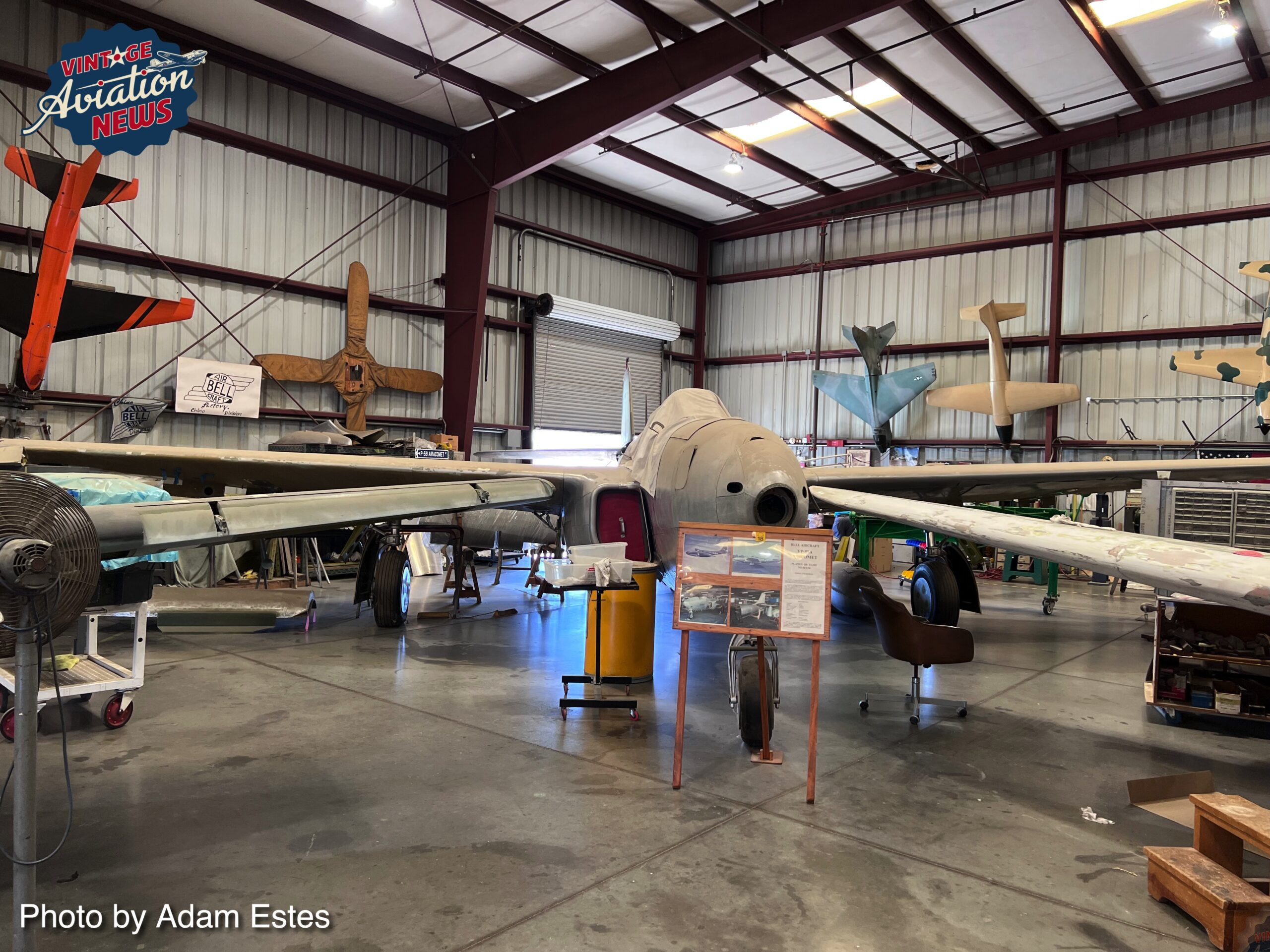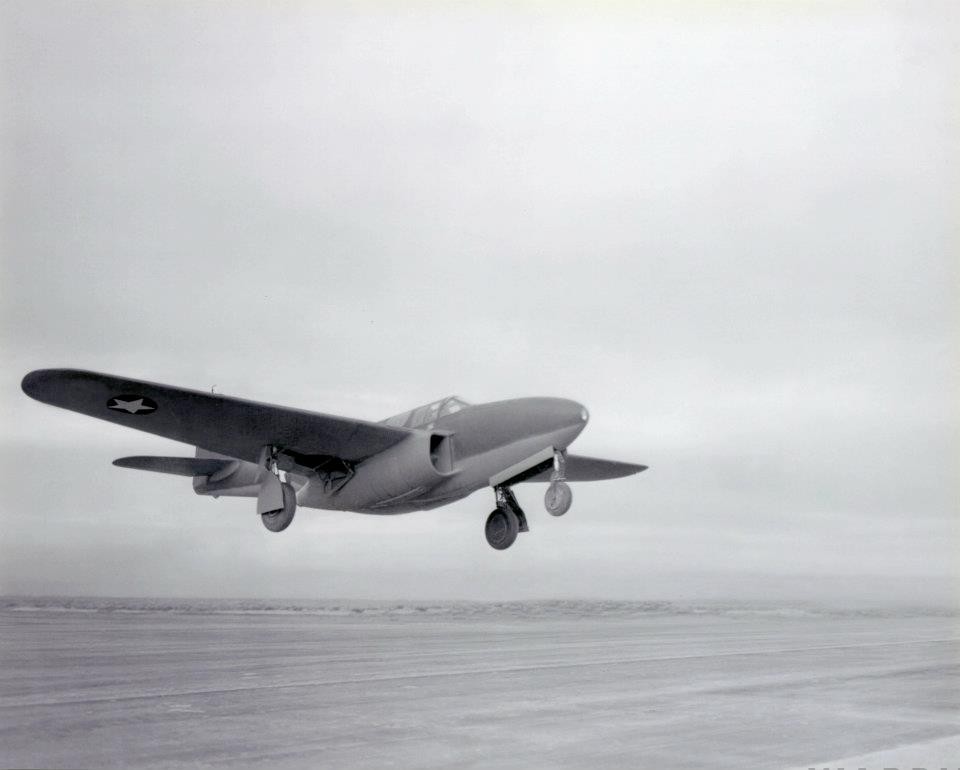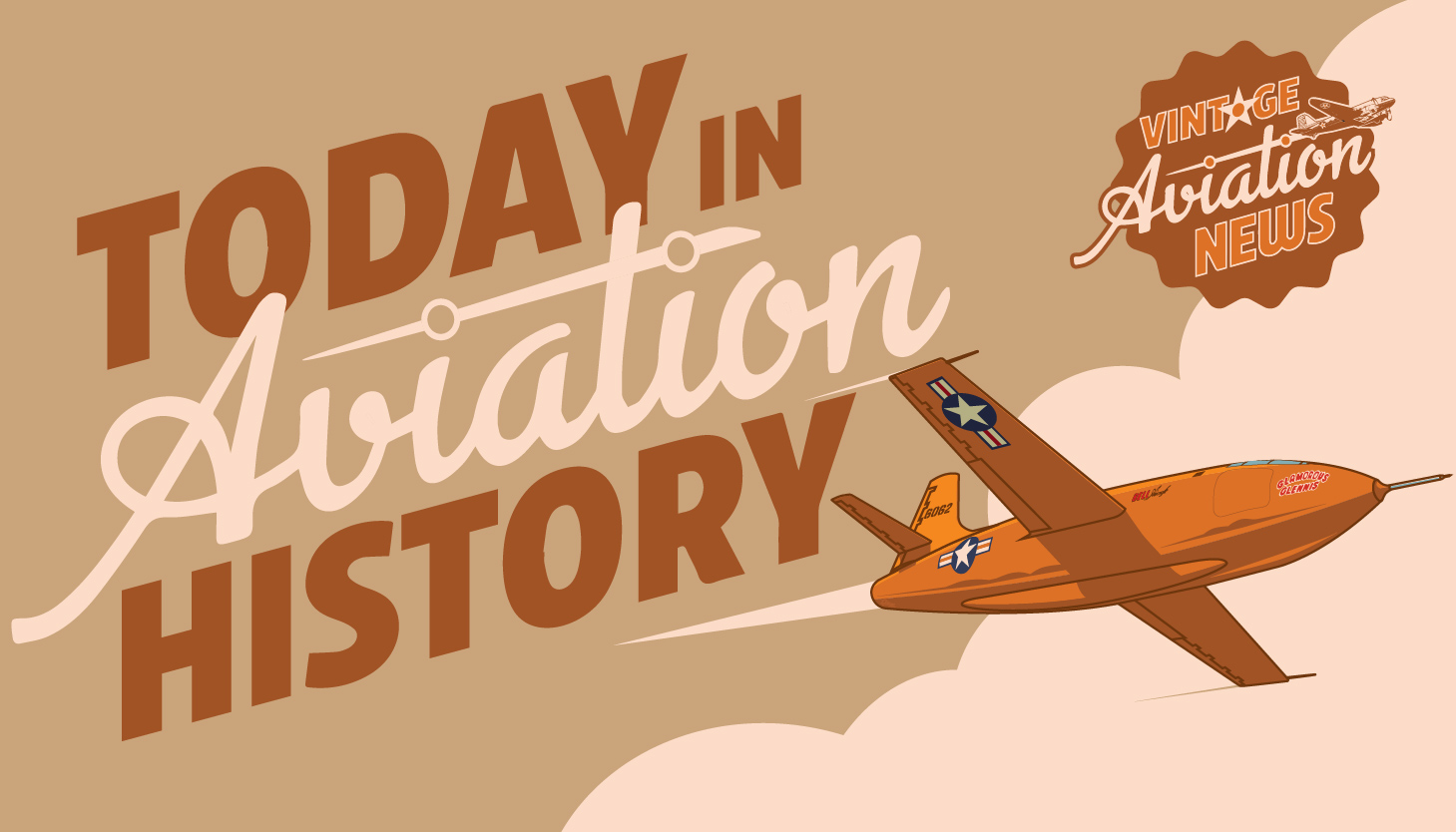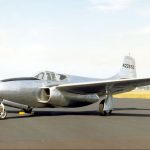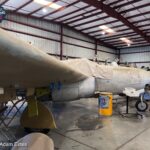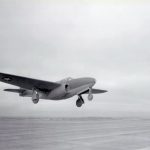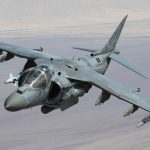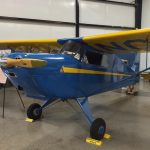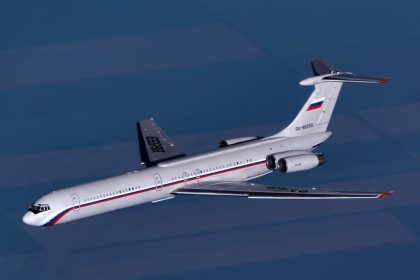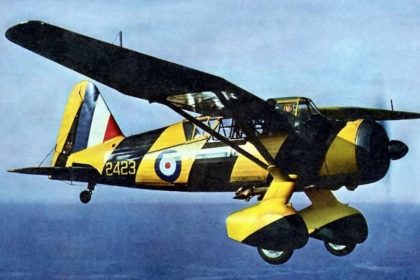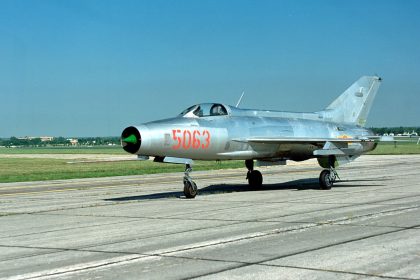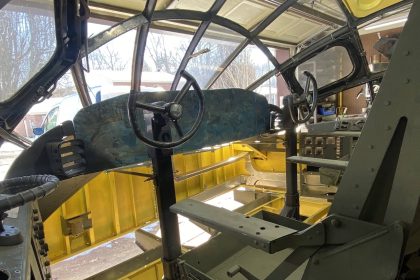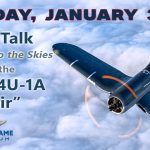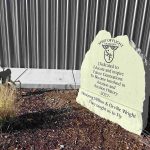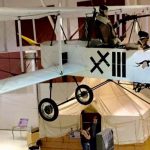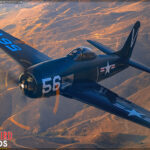Eighty-three years ago today, on October 1, 1942, the Bell XP-59 Airacomet took to the skies for the first time, marking the dawn of the jet age in the United States. Built by Bell Aircraft during World War II, the Airacomet was America’s first jet-powered fighter to fly. The story of the P-59 began in April 1941, when U.S. Army Air Forces chief General Henry “Hap” Arnold observed a taxiing demonstration of the British Gloster E.28/39. Convinced that jet propulsion represented the future of combat aviation, Arnold returned home determined to see an American design take shape. Development began soon after, and by the fall of 1942, Bell’s experimental XP-59A was ready for testing.
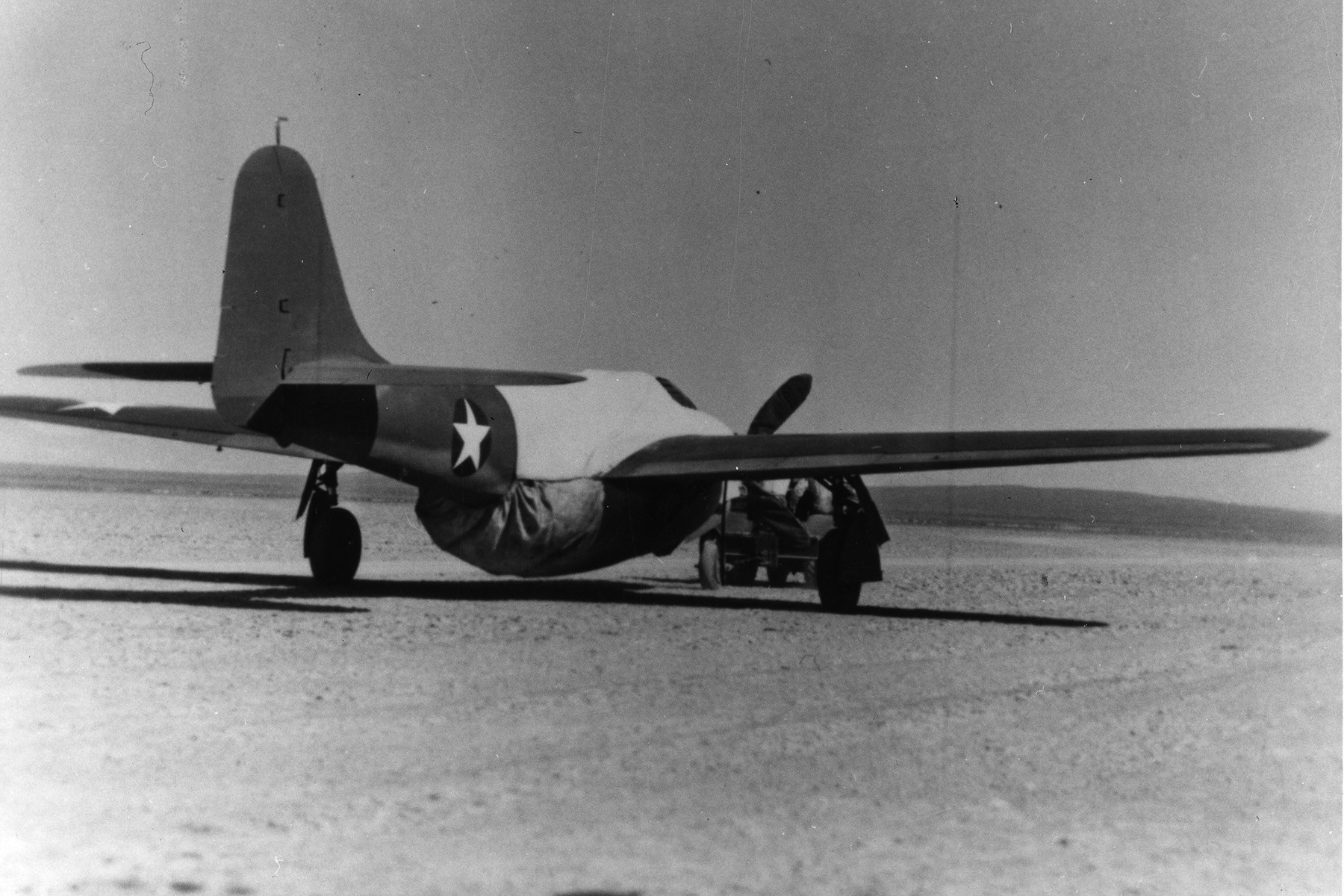
On the morning of October 1, Bell test pilot Robert Stanley was conducting high-speed taxi trials at Muroc Army Air Field (today Edwards AFB) when the prototype unexpectedly lifted off. Though unplanned, the brief hop counted as the type’s first flight, ushering in a new chapter for U.S. military aviation.
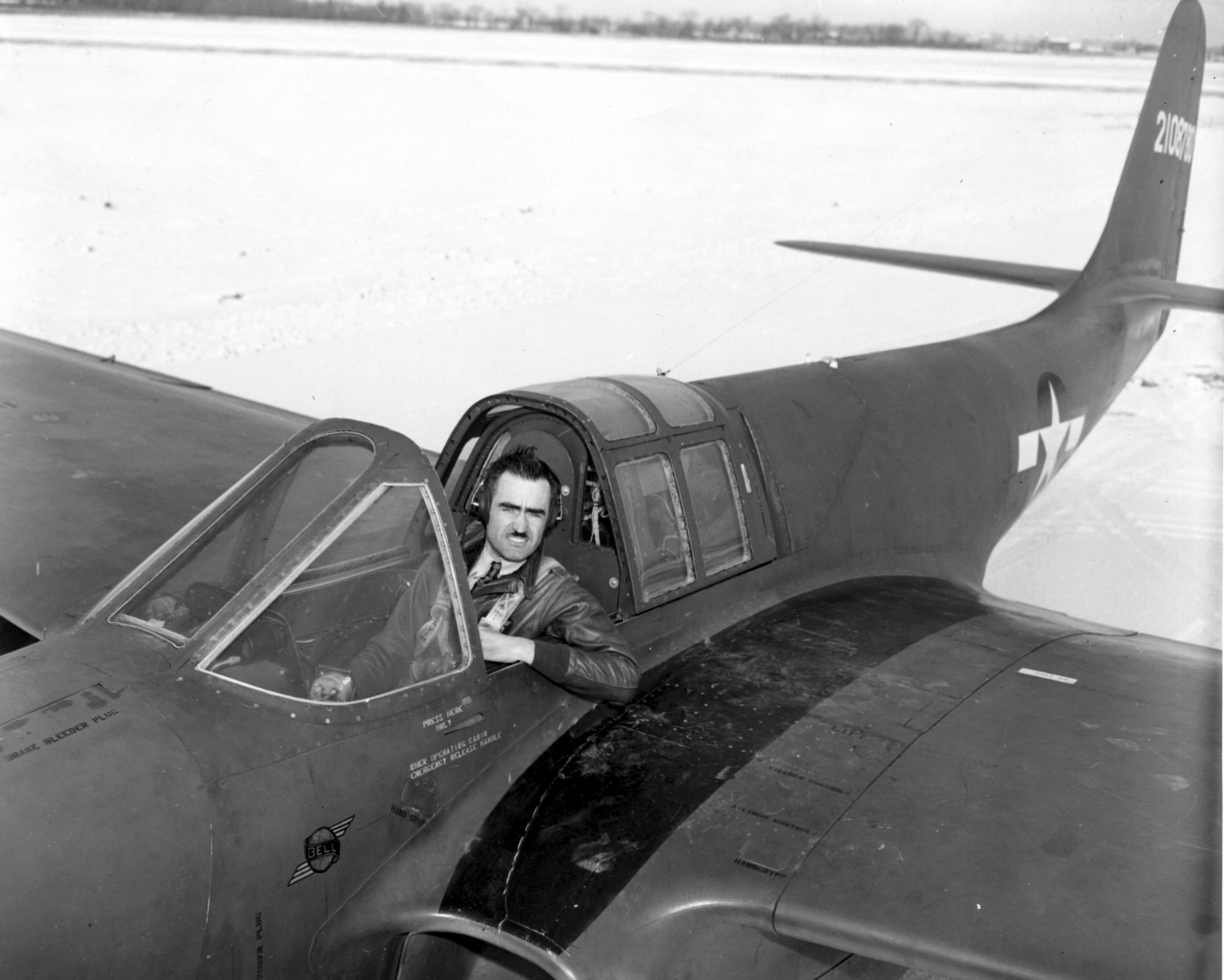
At the time, American knowledge of jet propulsion lagged behind Britain’s. To accelerate development, the British provided examples of their early jet engines, which General Electric used as the basis for the J31 turbojet. The J31-GE-5 engine produced around 2,000 pounds of thrust, enabling the P-59 to reach a maximum speed of 413 mph, though its cruising speed was closer to 375. Performance was hampered by sluggish throttle response and poor reliability, while the airframe suffered from stability issues above 290 mph, giving the aircraft a tendency to “snake” in flight and limiting its effectiveness as a gun platform.
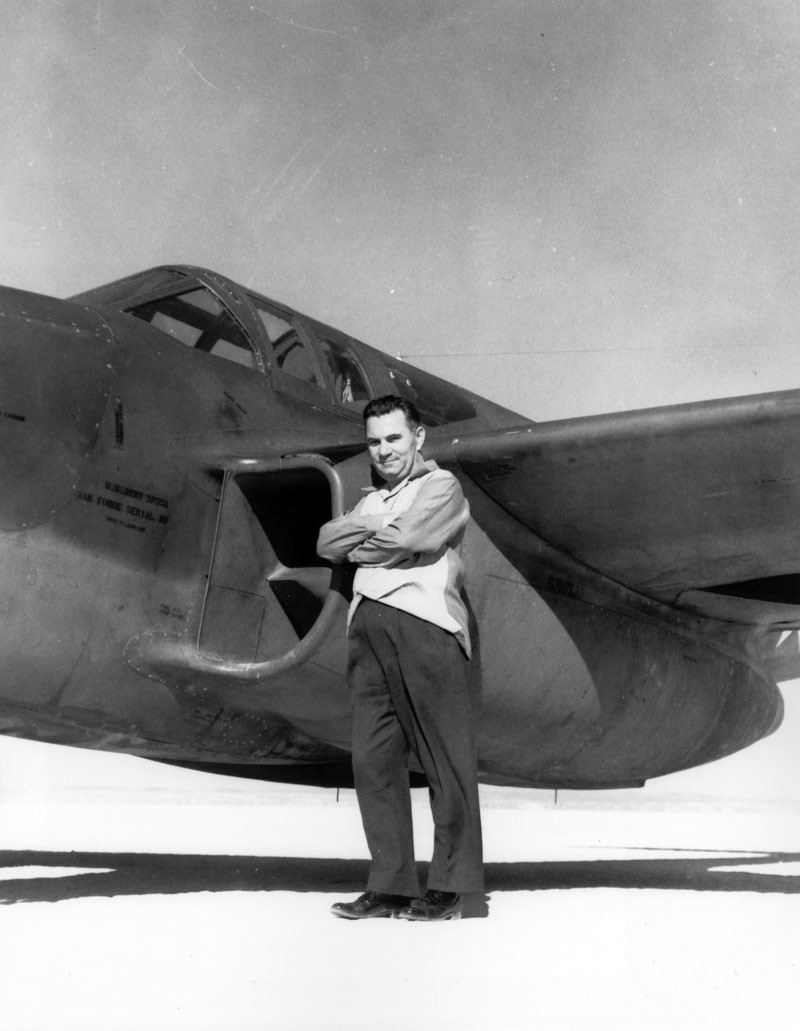
Despite its shortcomings, the P-59 represented an important step in jet development. The later P-59B variant featured a range of 326 nautical miles, a service ceiling of 46,200 feet, and could climb to 30,000 feet in 15 and a half minutes. Armament included a 37 mm M10 cannon with 44 rounds, three .50 caliber AN/M2 Browning machine guns, and the option to carry rockets or bombs. Bell ultimately built 66 Airacomets. Though never deployed in combat, the type proved invaluable as a training tool, introducing U.S. Army Air Forces pilots to the handling characteristics of jet-powered aircraft. A handful of P-59s survive today. Among them is YP-59A 42-108777, preserved at the Planes of Fame Museum in Chino, California, where it remains the focus of a long-term restoration effort—one that may eventually see America’s first jet fighter return to the skies.
